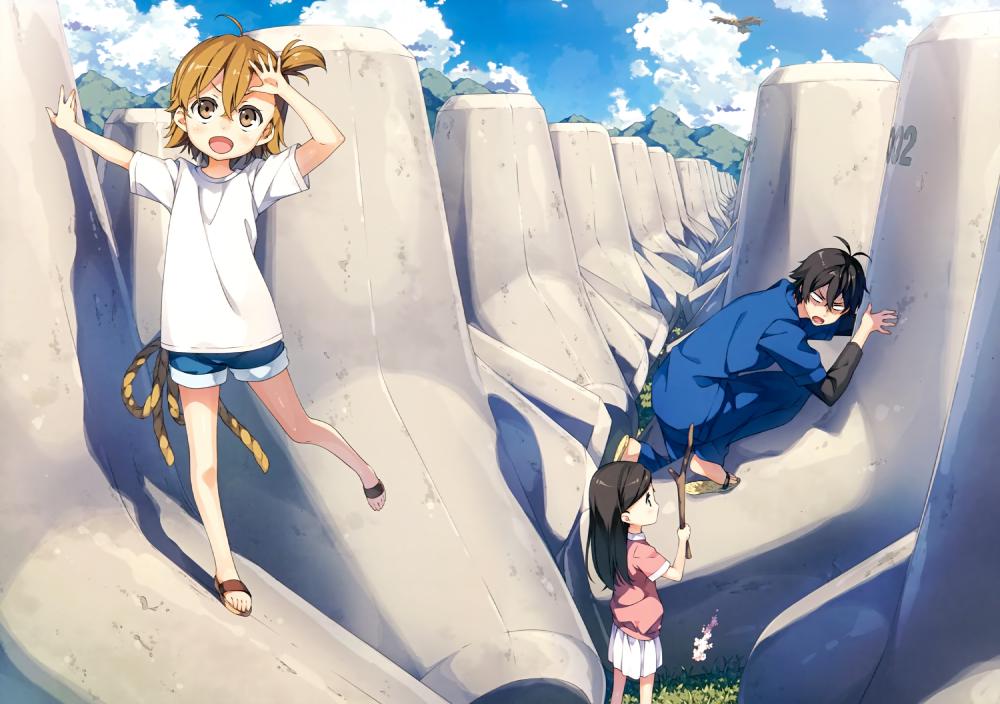
This page demonstrates some of the different ways to control the rendering of different markdown elements on this blog. This page makes heavy use of block level attributes as supported by mmark, such as:
{.foo .bar} hello worldthis results in a paragraph with the text-content hello-world and classes foo and
bar.
#Basics
| class | description |
|---|---|
| left | float to left |
| right | float to right |
| clear-left | clear floating elements on the left |
| clear-right | clear floating elements on the right |
| stack-left | float-left and add some indent |
| stack-right | float-right and add some indent |
| center | center-align an image or paragraph tag |
| inline | display element inline to it's siblings |
#Colors
There are classes defined for each predefined color and derivatives of those classes which're activated when marked elements are hovered. For a list of available colors, see colors.scss.
For example, using the color red we can define:
hello sailor
hello sailor
using the following HTML.
<p>hello <span class="red">sailor</span></p>
<p>hello <span class="hl-red">sailor</span></p>The same general form is used for other supported colors.
#Blockquotes
blockquotes are supported through both the builtin markdown syntax (lines prefixed
with >) and a shortcode which supports citing a source for the blockquote as well.
The shortcode takes keyword arguments for src and cite. The src field is used
in the src attribute of the tag, whereas the cite field is appended to tail of the
tag and formatted in a way to make it stand out. For example the following will
result in:
{{< quote cite="Jon Von Neuman" >}}
One can even conjecture that *Lisp owes* its survival specifically to the
fact that its programs are lists, which everyone, including me, has
regarded as a disadvantage.
{{< /quote >}}One can even conjecture that Lisp owes its survival specifically to the fact that its programs are lists, which everyone, including me, has regarded as a disadvantage.
Jon Von Neuman
#Source Code
See the docs on source code highlighting.
def fib(n):
if n <= 1:
return n
return n + fib(n-1)#Lists
Lists are written in the classic markdown style.
- Apples
- Oranges
- Grapes
The inline list class can be used to collapse all list elements together.
{.inline-list}
- apples
- oranges
- grapes- apples
- oranges
- grapes
#Tables
By default, this blog renders tables as full-width containers. An example of it can be found at basics.
The following classes alter the styling of html tables.
| Class | Description |
|---|---|
| auto-width | let the table grow to an appropriate width. |
| no-style | don't apply foreground, background or border styling. |
#Images
#Galleries
You can turn a simple table into an equal split image gallery using the .img-gallery
class.
{.img-gallery .no-style}
| {{< figure src="5210.webp" >}} | {{< figure src="5213.webp" >}} |
|------------------------------------|------------------------------------|
| caption: *sleepy* Izumi | caption: *excited* Izumi | |  |
|---|---|
| caption: sleepy Izumi | caption: excited Izumi |
#Shortcodes
#Fontawesome
You can include fontawesome icons using the fontawesome shortcode. This shortcode expands the path to where fa icons are stored, reads the desired SVGs and includes (a link to) them at the current position of the document.
SVGs are defined right at the end of the document (after the footer), so icons won't be defined more than once (if included in the document more than once) and they won't be loaded until after the page has.
You can specify the path and type fields as keyword arguments but, more often
than not, it'll be easier to simply pass them as ordinal arguments. You can also
abbreviate the type to a single character (in which case the appropriate type will be
calculated at runtime).
{{< fontawesome "s" "yin-yang" >}}See here for a preview of all supported fontawesome icons.
#Editing SVGs
When editing SVGs (by hand, from a file), take care for reasons beyond my understanding that this blog
assumes the icon has no trailing linefeed or linebreak character. When in doubt, try running through xxd.
xxd /path/to/fileand observe whether the last byte after the svg is 0a or 0d0a. You can remove these using the truncate
command:
truncate -s -1 /path/to/file#Notifications
The notify shortcode can be used to make highlighting important information easier. It takes two
arguments the kind/importance of information being displayed and the message. for eg.
{{< notify "" "megumin's gonna blow" >}}Similairly special formatting has been setup for the following kinds:
- debug (note)
- info
- warning
- error
- success
#Ascii
_ _
__ _____| | ___ ___ _ __ ___ ___ | |_ ___
\ \ /\ / / _ \ |/ __/ _ \| '_ ` _ \ / _ \ | __/ _ \
\ V V / __/ | (_| (_) | | | | | | __/ | || (_) |
\_/\_/ \___|_|\___\___/|_| |_| |_|\___| \__\___/
_ _
| |__ _ _ __ _ ___ | |
| '_ \| | | |/ _` |/ _ \| |
| | | | |_| | (_| | (_) |_|
|_| |_|\__,_|\__, |\___/(_)
|___/
_____
/ / \_\
! !
\ \
|_|
_
|_| You can include ascii gifs on the page using the {{< ascii "question-mark" >}}
shortcode. The first argument to the shortcode is the path to the desired art file,
relative to the root ascii art directory. The second argument is a class which
if given, will be attached to the gif.
You can also wrap ascii gifs in a div with the class ascii-block and it'll be
displayed flexibly; like above.
#Gists
Hugo comes with a builtin shortcode to reference github gists. It takes the form:
{{< gist USER HASH [FILE] >}}#Asciinema
I've created a shortcode to support asciinema
recordings. These are just recordings of text sessions (most probably
from a terminal) that can be played back on your site. For a list of
supported options, see src/layouts/shortcodes/asciinema.html.
{{< asciinema key="./neofetch.cast" >}}key, cols & rows as positional arguments.At the moment globally accesible recordings go into src/assets/casts.
You can define local recordings using page resources.
In the shortcode, local resources will be used when the key in the asciinema
shortcode is prefixed with ./, otherwise global resources will be used,
Recordings should be playable on the smallest screen size supported, which at the moment is 443px. They can be as high as desired. If your recordings are too wide asciinema will clip off the right hand side, showing only the visible portion.
#Frontmatter
#Styles
stylesheets by default are placed in /assets/styles/. every page can specify an
array of styles in it's frontmatter, which override the default styles that a page
should recieve. NOTE: By override here, I mean default styles won't be loaded at all
and instead only the given stylesheets will be. For example:
---
styles:
- my-sheet.scss
---will result in /assets/styles/my-sheet.css being the only stylesheet used on the
current page.
You can also set the default_styles field to true to include the default styles
alongside the new ones. In this case, the defaults will be loaded first and, any, other
styles afterwards
---
default_styles: true
styles:
- my-sheet.scss
---#Thumbnail
Pages can define a thumbnail image. This image will be shown at the top of the page (after the title) and may have an associated caption (and source) to indicate where its from or what it's showing.
thumbnail:
path: path/to/image/resource.jpg
caption: cheatsheet, every good site should have one
height: 500 # maximum height of the image
position: center # object-position property
resize: widthxheight # resize image before showing
source:
link: "https://find-this-image-here.com/image"
title: title and maybe the caption of this link
display_title: use this as caption, but keep title#Meta
The frontmatter section of each page can contain a meta dictionary which lets you configure rendering of the page. You can also configure these for an entire section using Hugos front matter cascade feature.
Here are the prescribed defaults and their intended affects.
meta:
# include a Disqus comment thread on this page
comments: false
# include meta data about post, include date
# categories, tags, next/prev post etc.
post: false
# whether to make headings links to themselves.
anchor_links: true
# show a button to scroll back to the top of the page
scroll_button: true
# latex, render latex at runtime using mathjax
latex: true
# configure rendering of the title element
title:
# when true the title is ommitted from the page
hidden: true
# override the title that's shown, the page title
# is still .Title
display: "New title"For demonstration purposes, each of these have been toggled to their non-default state on this page.
For _index.md section pages, you can also apply the following styles to alter
how those pages are paginated in taxonomies etc.
meta:
# prevents subsections/posts from having a date field
# included in their pagination. See /notes/langs/.
no_date: true#Layouts
hugo has extensive (& frankly overly complex) rules for
which layout to use for a given page on your site. It's bitten me in the back more
times than I can count 😢.
Each page has a kind attribute which determines the kind of page that is looked for in the lookup order. You can set this attribute in the frontmatter.
Pages also have a type field which matches the section under which the page is
found. These are used in lookup rules to override the layouts contained in the
_defaults folder.
Lastly, you can specify a layout field, in which case a layout with the given name
(extension is optional) is searched for in the root of the layouts directory or a
subdirectory matching the pages type.
#Resources
resources are files that're used (locally) by a page, such as images or stylesheets.
Only index.md or _index.md pages can have page resources, see
here
for how to configure them.